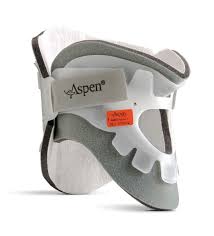A Cervical Collar is often prescribed for people who are recovering from surgery or had an injury such as whiplash. If a cervical collar was prescribed to help limit the movement on your neck, the following tips are recommended for donning and doffing.
Doffing a cervical collar:
- Lie down before doffing – Before you remove your cervical collar, be sure that you’re already lying down. You can lie down carefully by first sitting on the edge of the bed and then gently lower your back till you’re fully stretched out on the bed. Try as much as possible not to shake your head in the process.
- Check the exact position of the Velcro closure – Use your right arm to feel the left side of the cervical collar in order to familiarize yourself with the Velcro straps. Use your left arm to do the same to the right side of the Velcro closure.
- Undo the Velcro Straps: Use your hands to gently loosen the Velcro straps without moving your head around. Open the straps one at a time applying pulling force until all the Velcro straps are undone.
- Lift up the upper part of the cervical collar: If you have successfully undone the Velcro straps, carefully pull up the upper part of the cervical collar. Then carefully slide out other part of the cervical collar. You can also try doing this in front of a mirror.
Donning a cervical collar-
Donning is just a reverse of the doffing process
- While lying down, carefully slide the back panel under your neck. Be sure to keep your head still and place it exactly where it ought to be.
- Get the upper part of the cervical collar and place it on your chest, then gradually move it up until it touches your chin. Make sure it is not bent sideways or slanted.
- Carefully strap the Velcro without bending your head or neck. Make sure its not too tight or too loose. If it is too you might develop pressure sores. If it is too loose on the other hand, the aim of wearing a cervical collar in the first place will not be met.
I hope these tips will be of help to you. If you encounter any problem at all, don’t hesitate to contact your Prosthetist/Orthotist or Physiotherapist.
